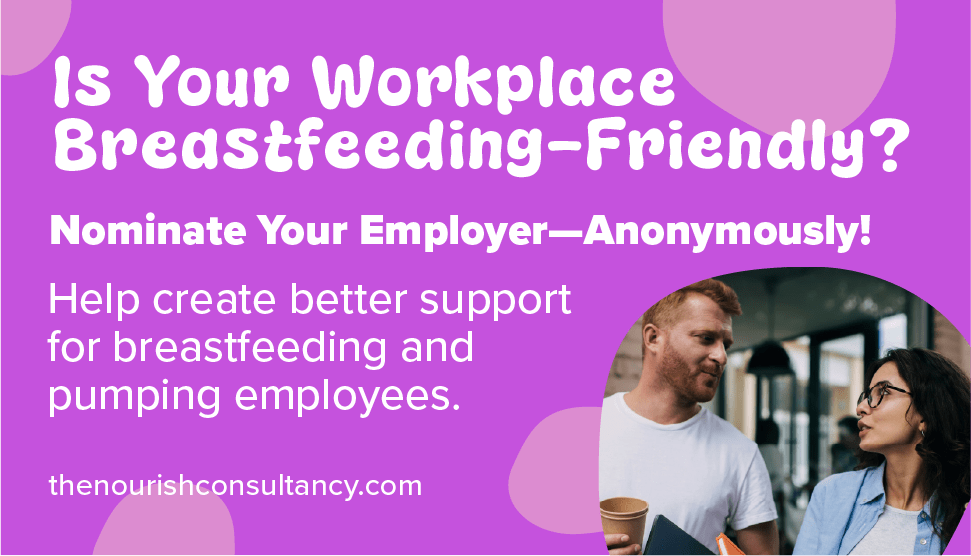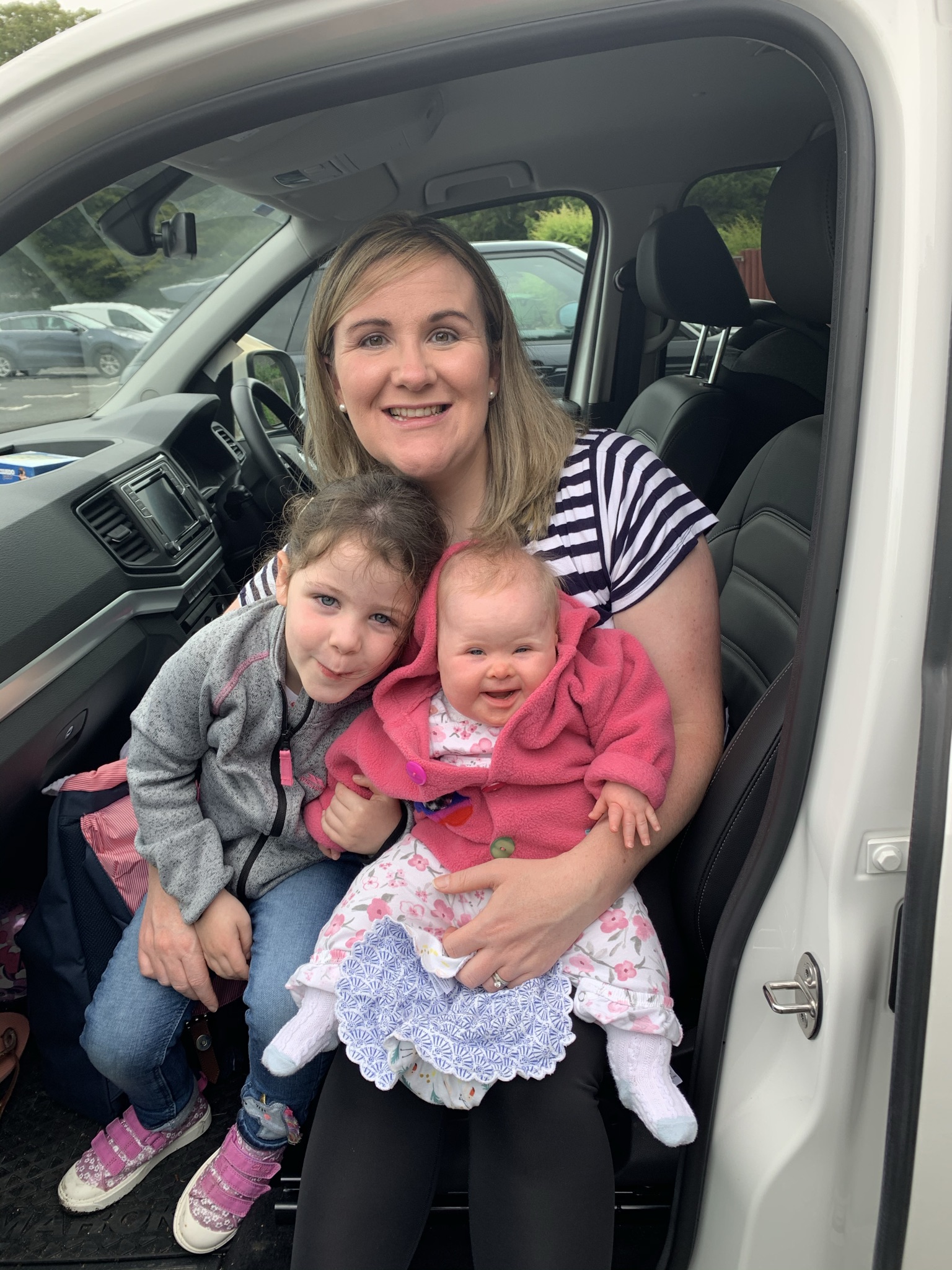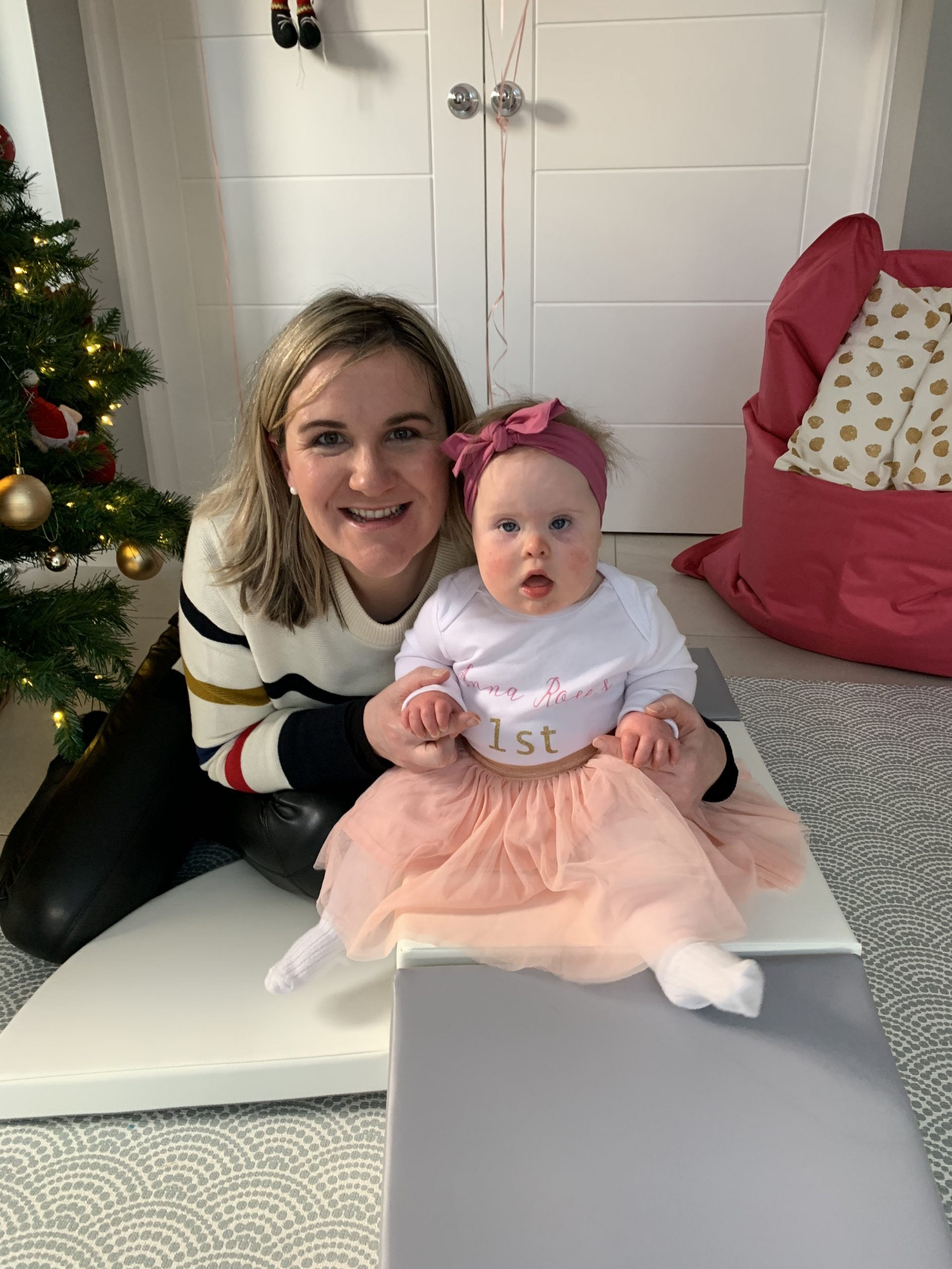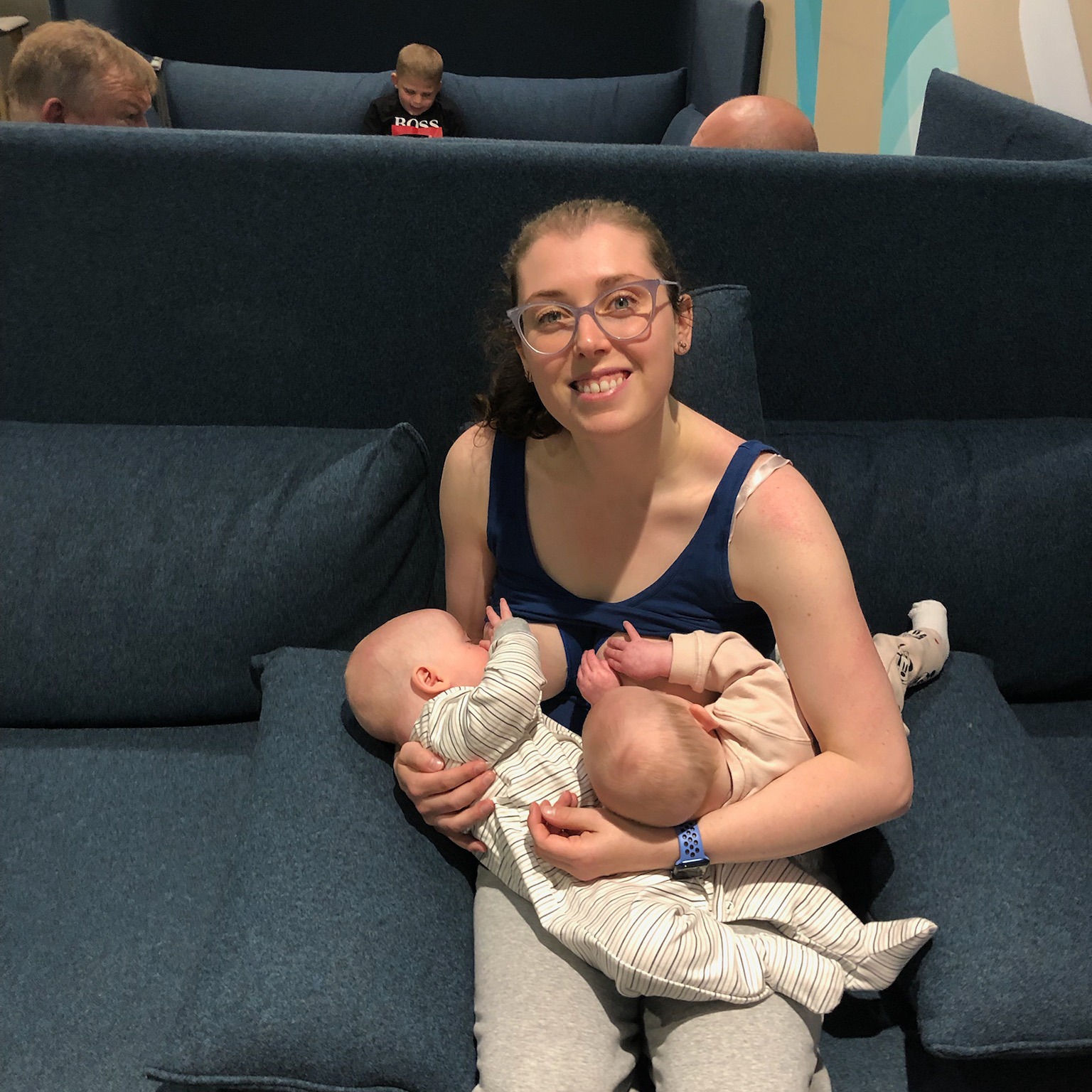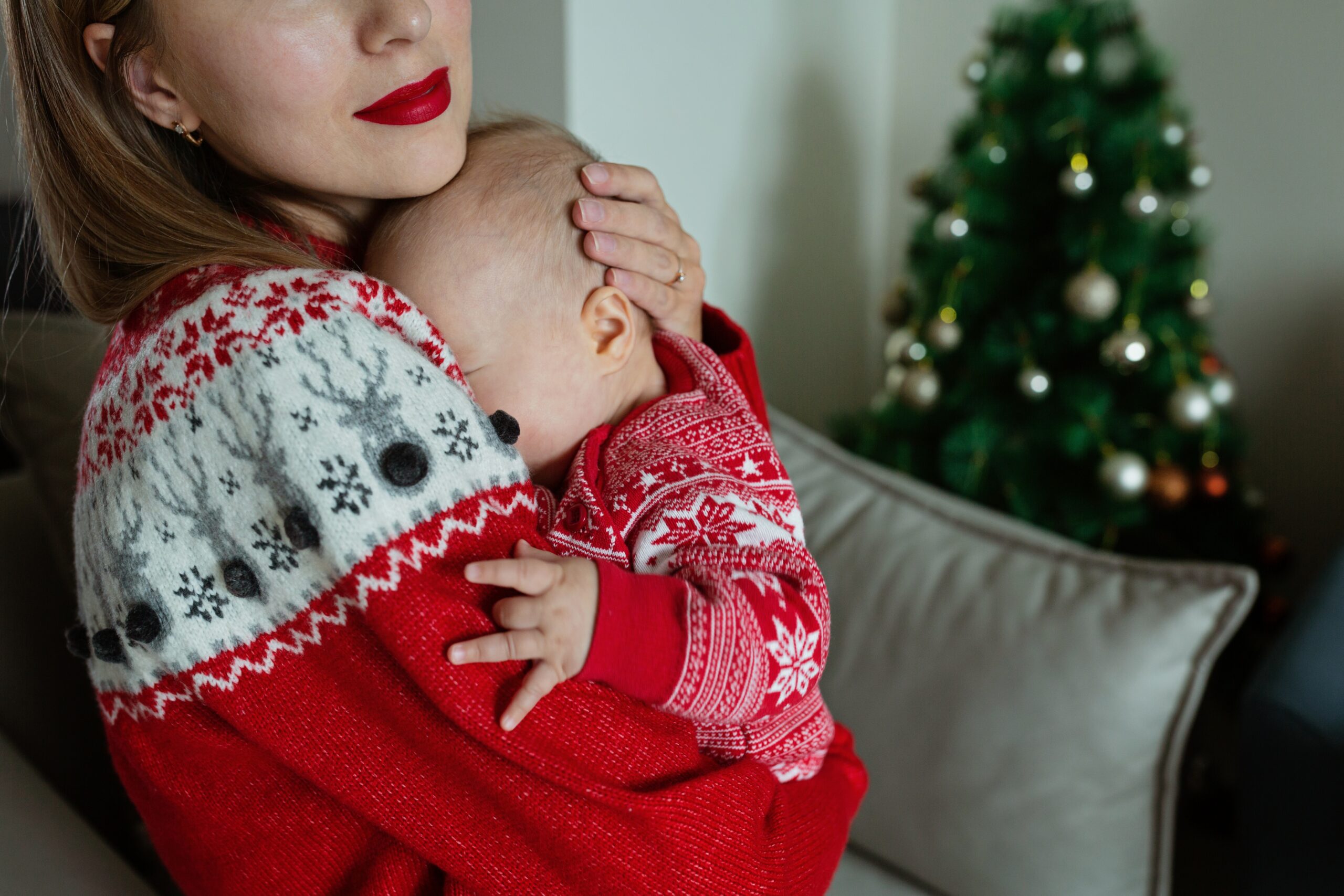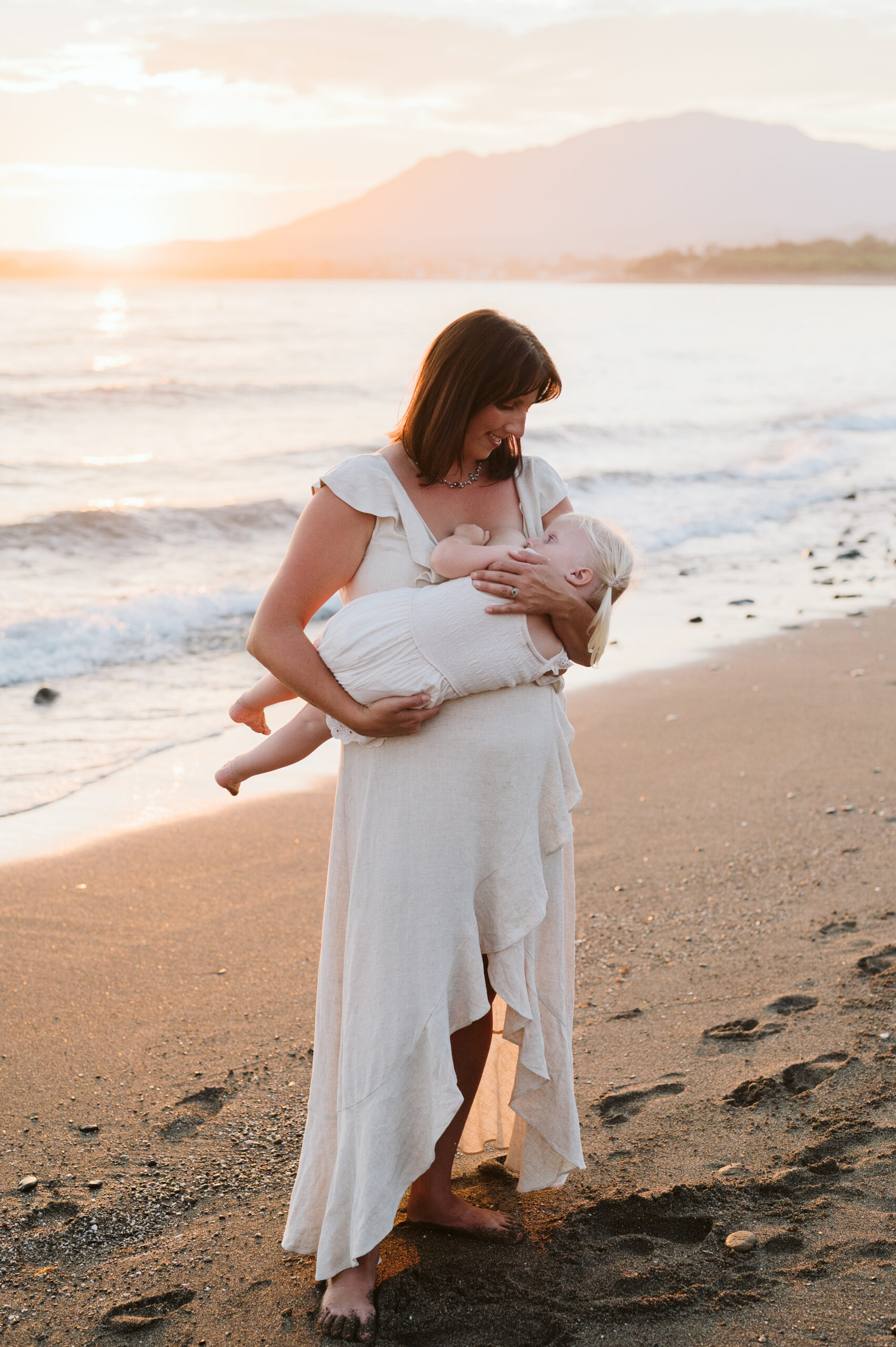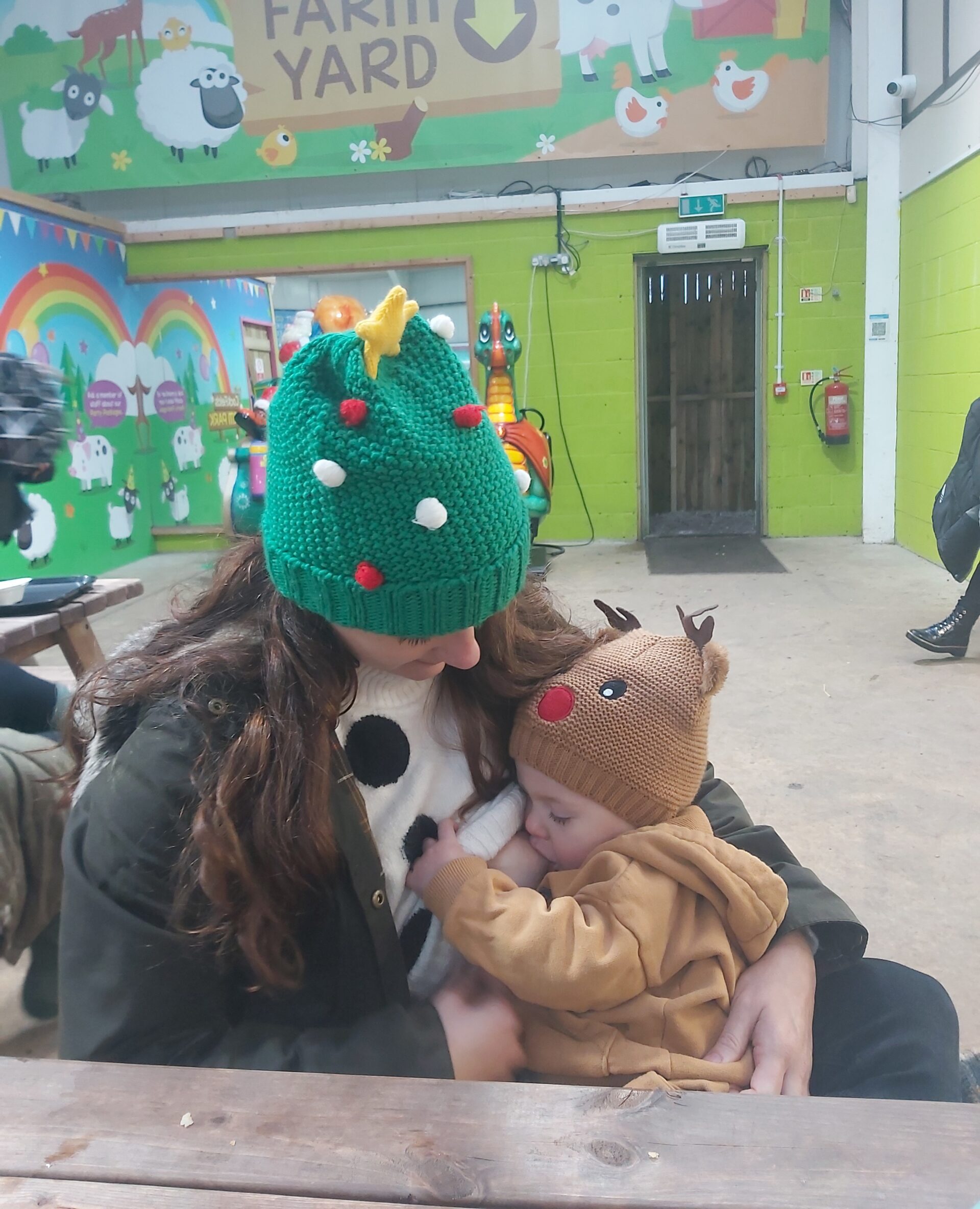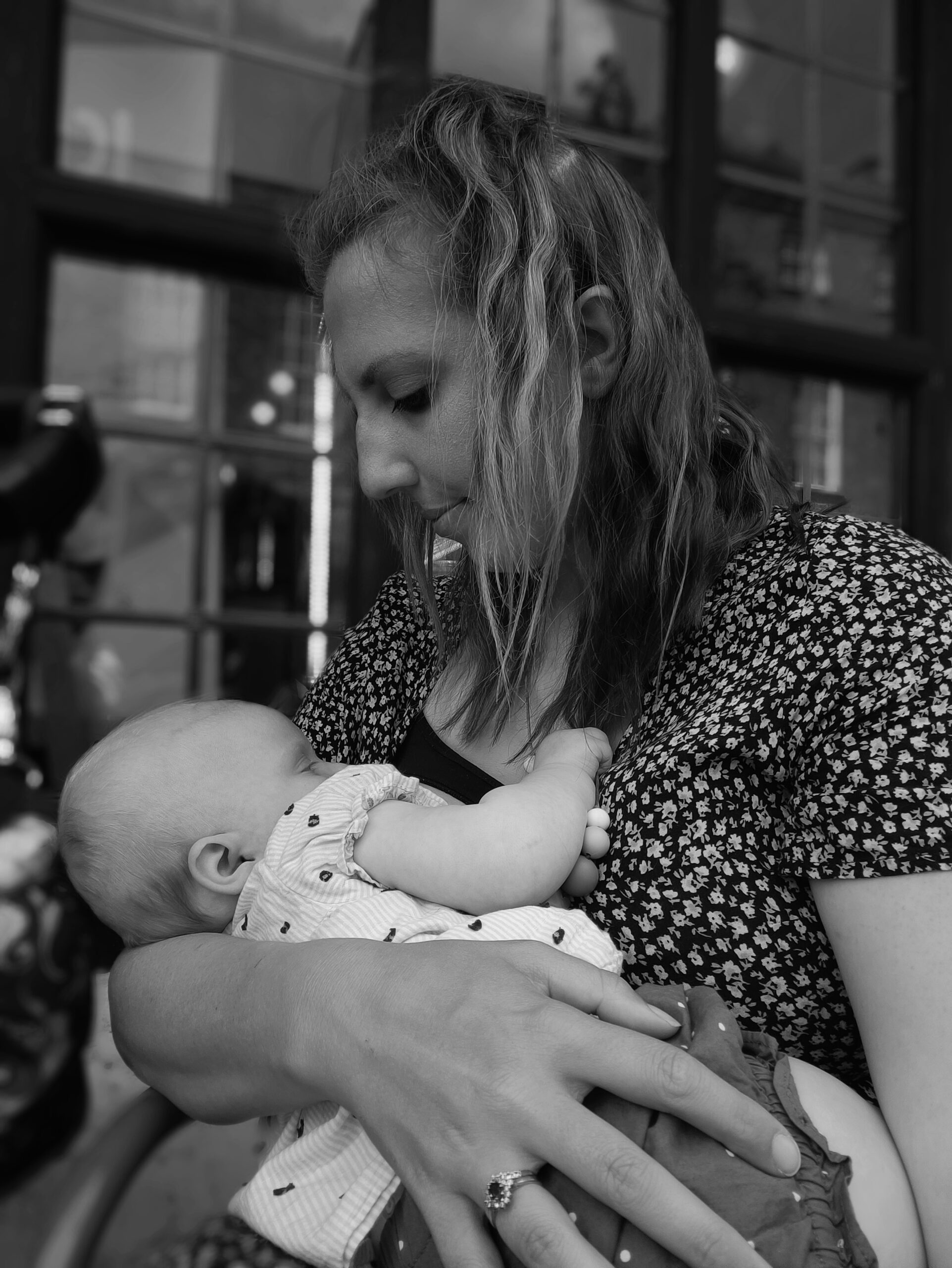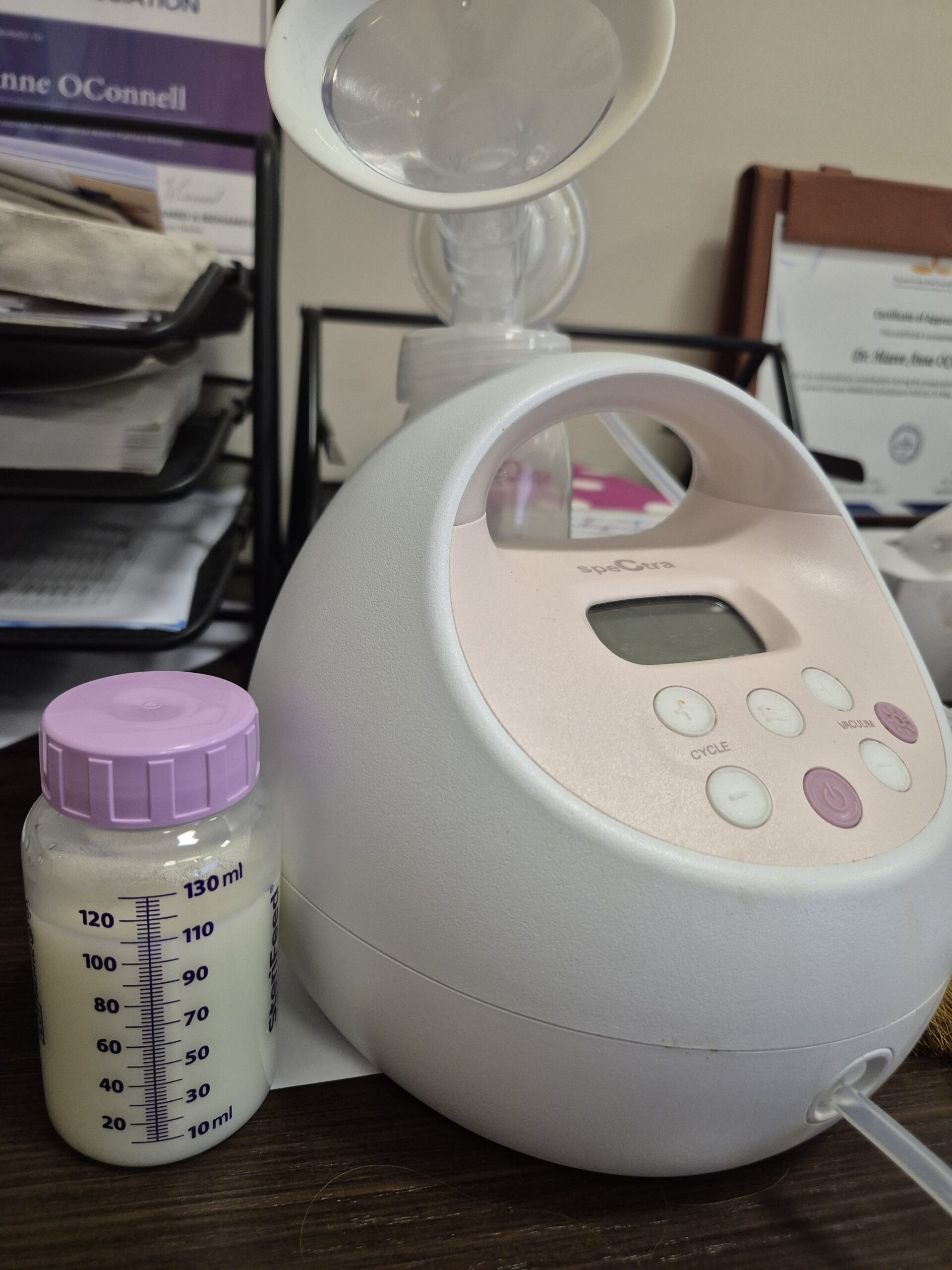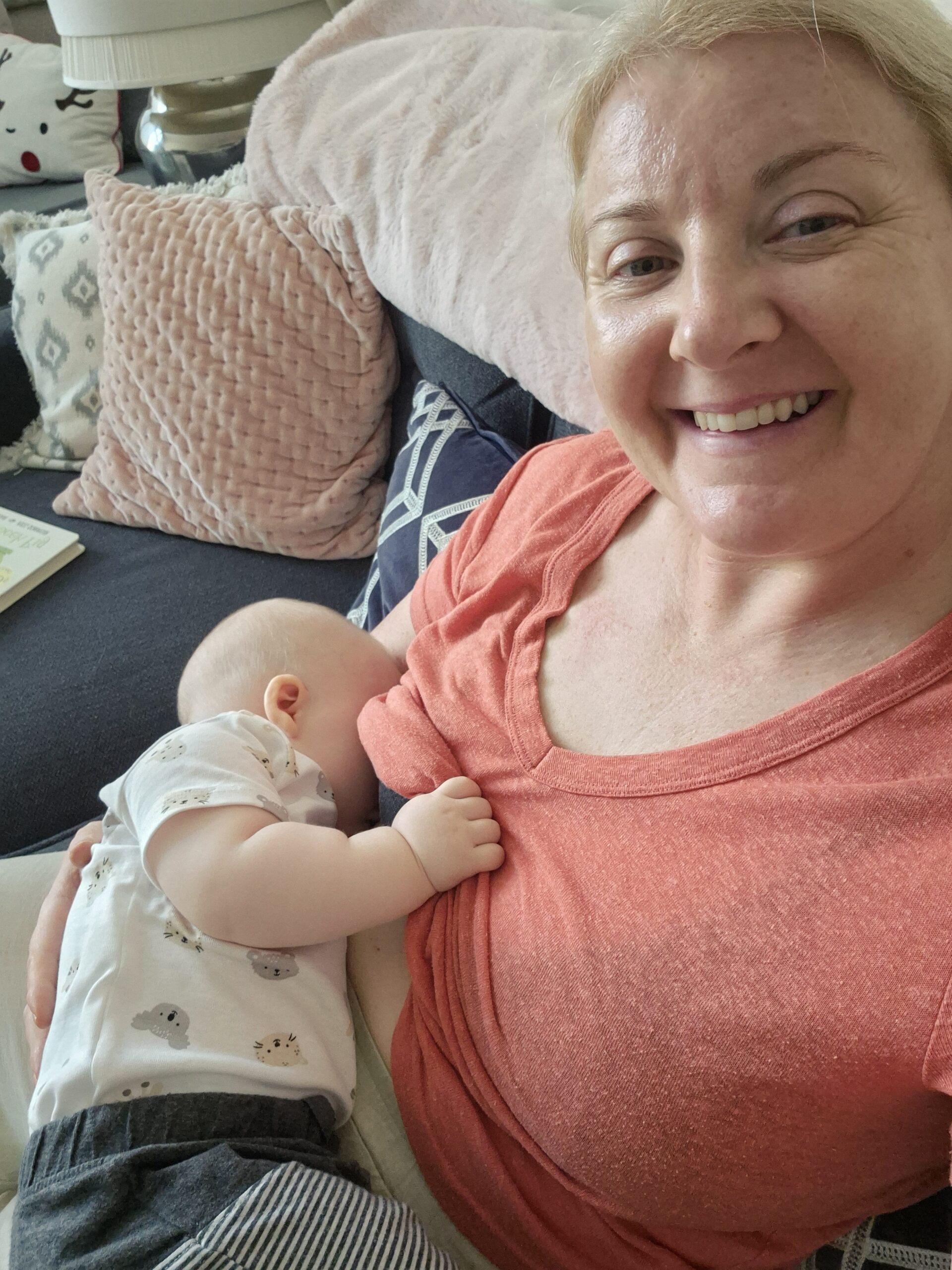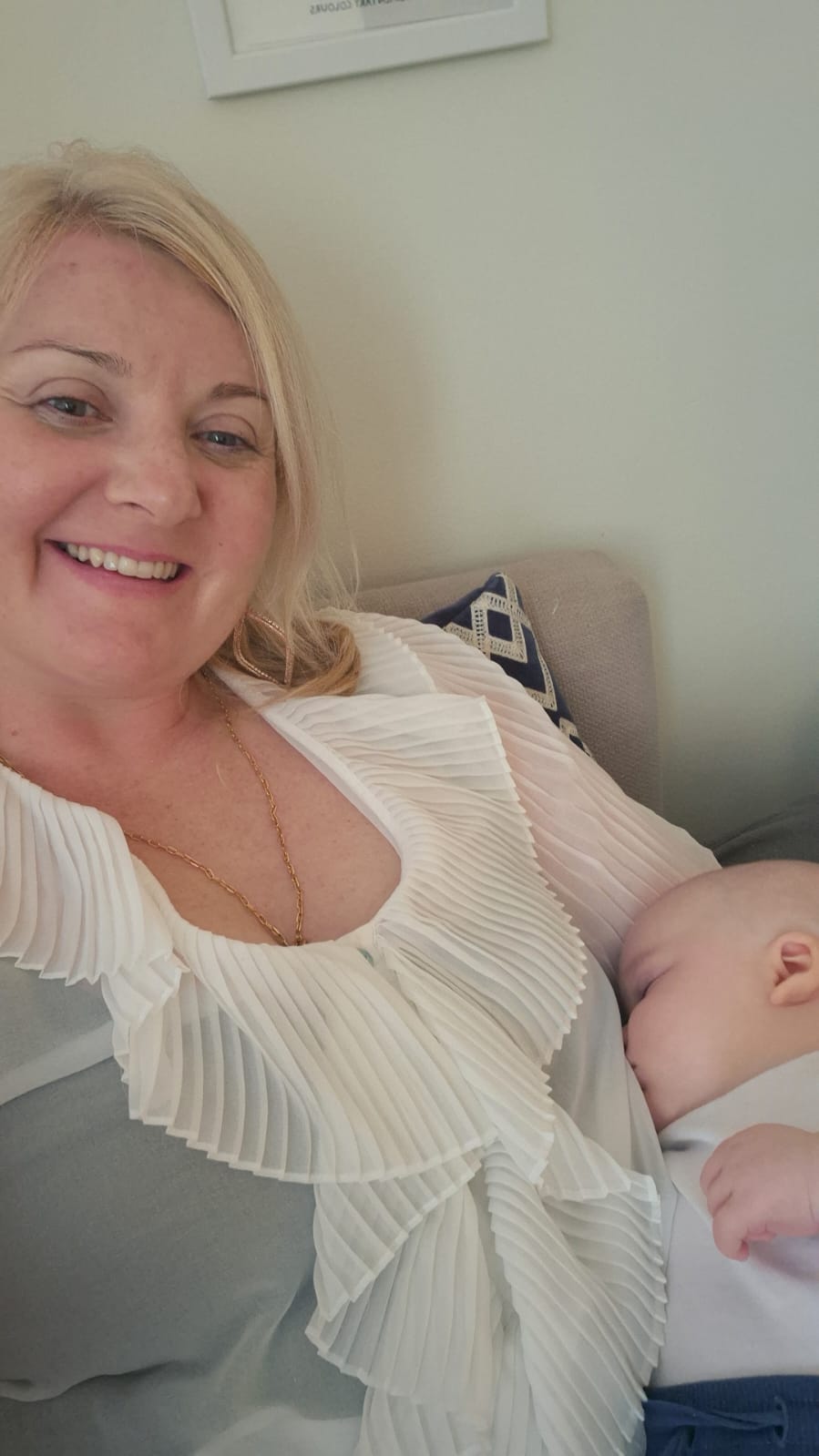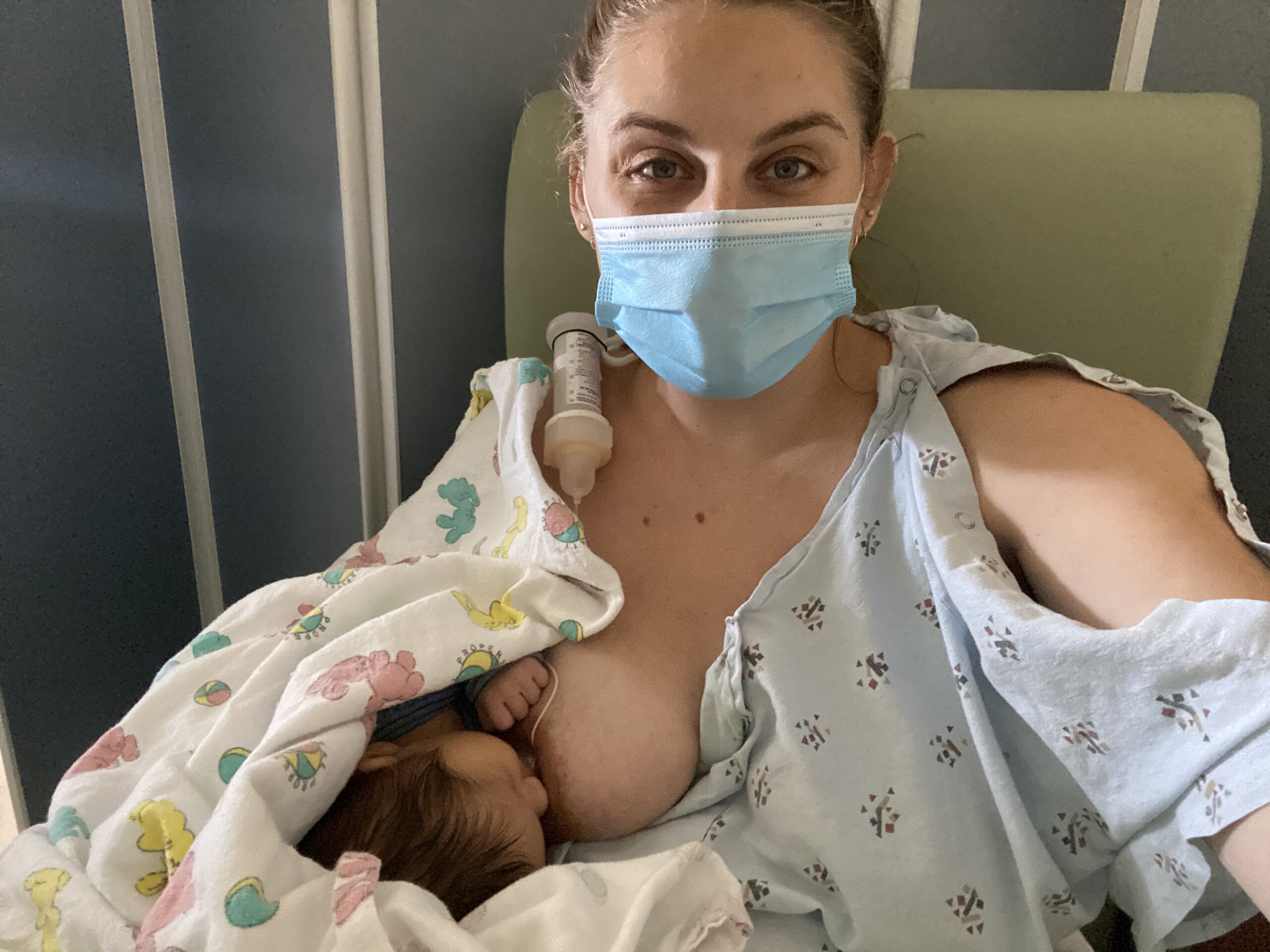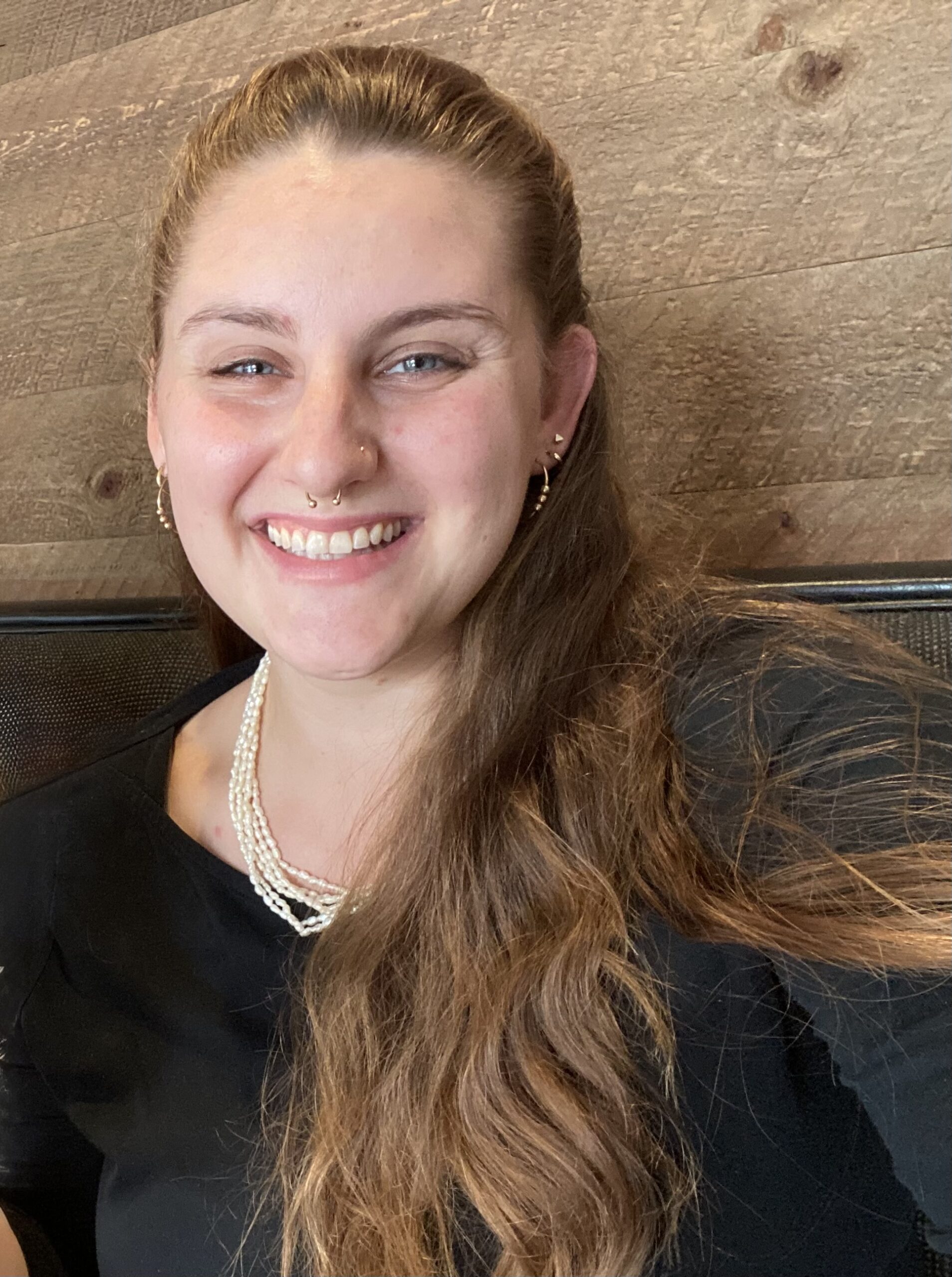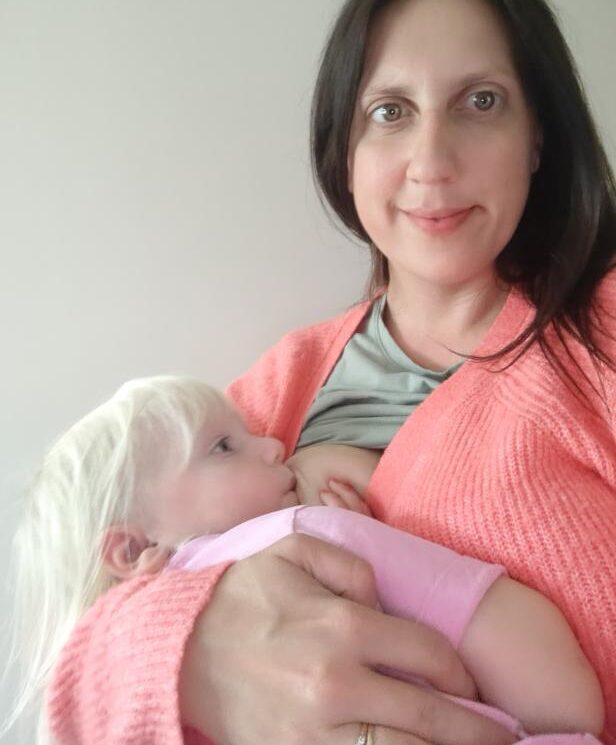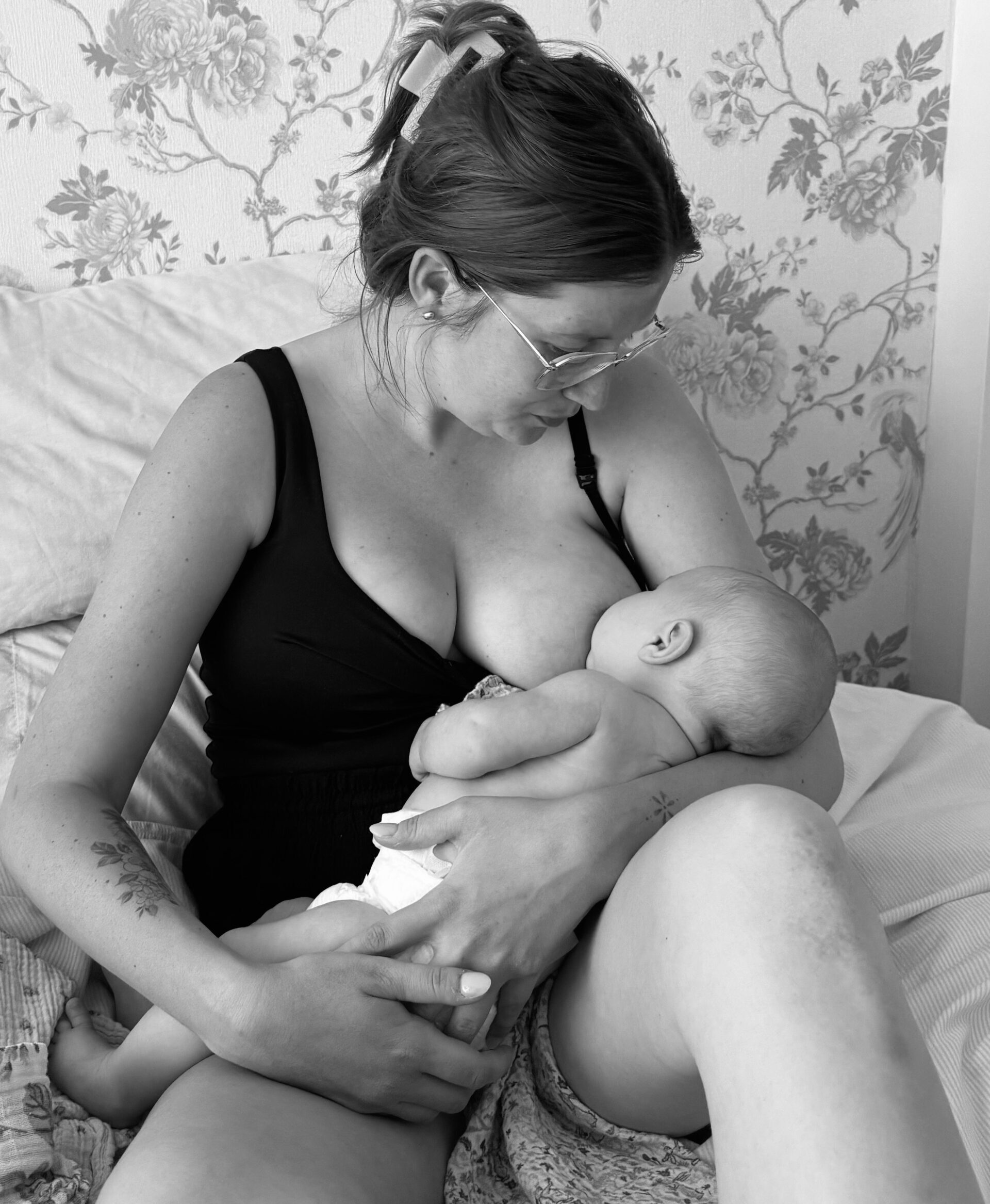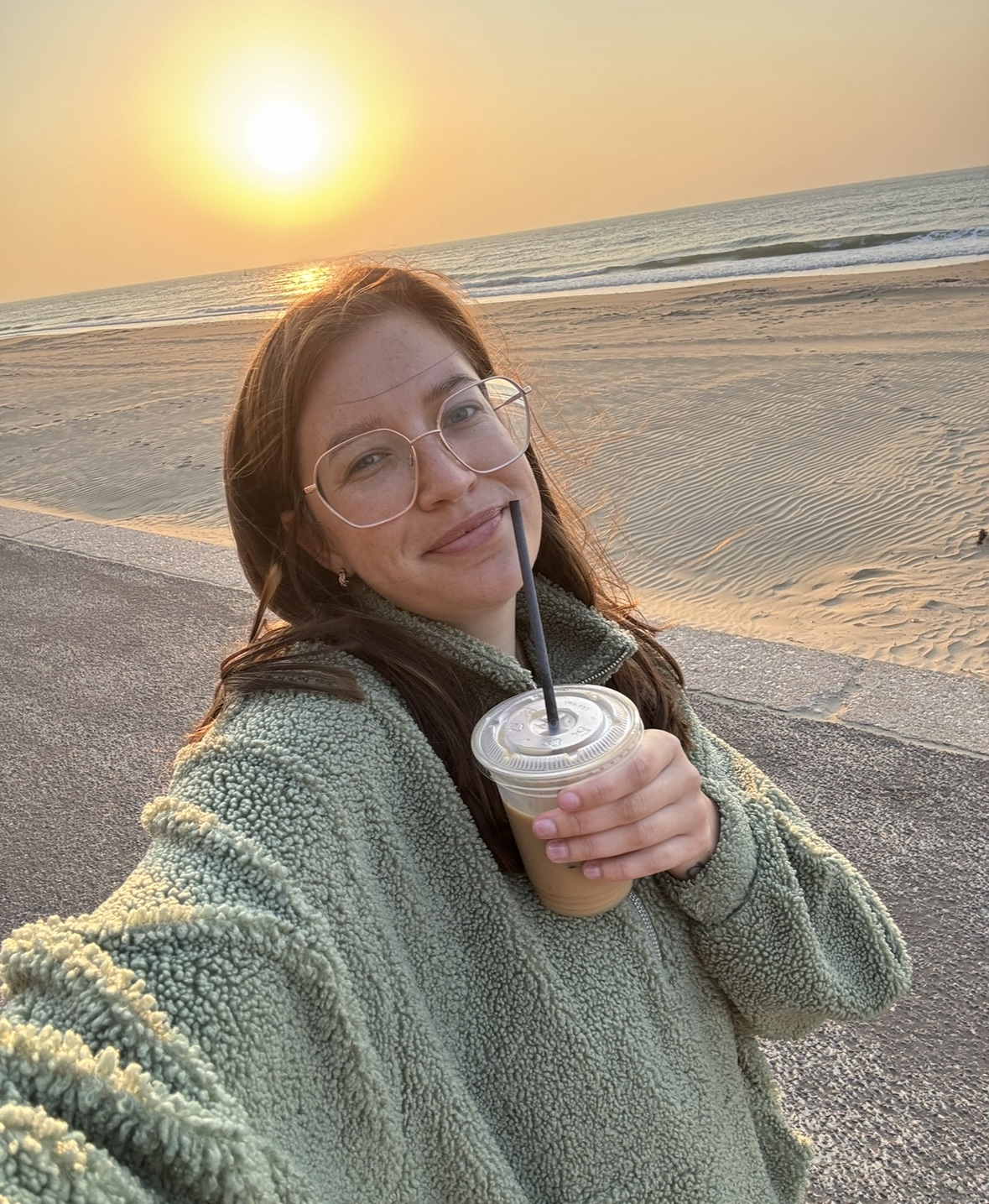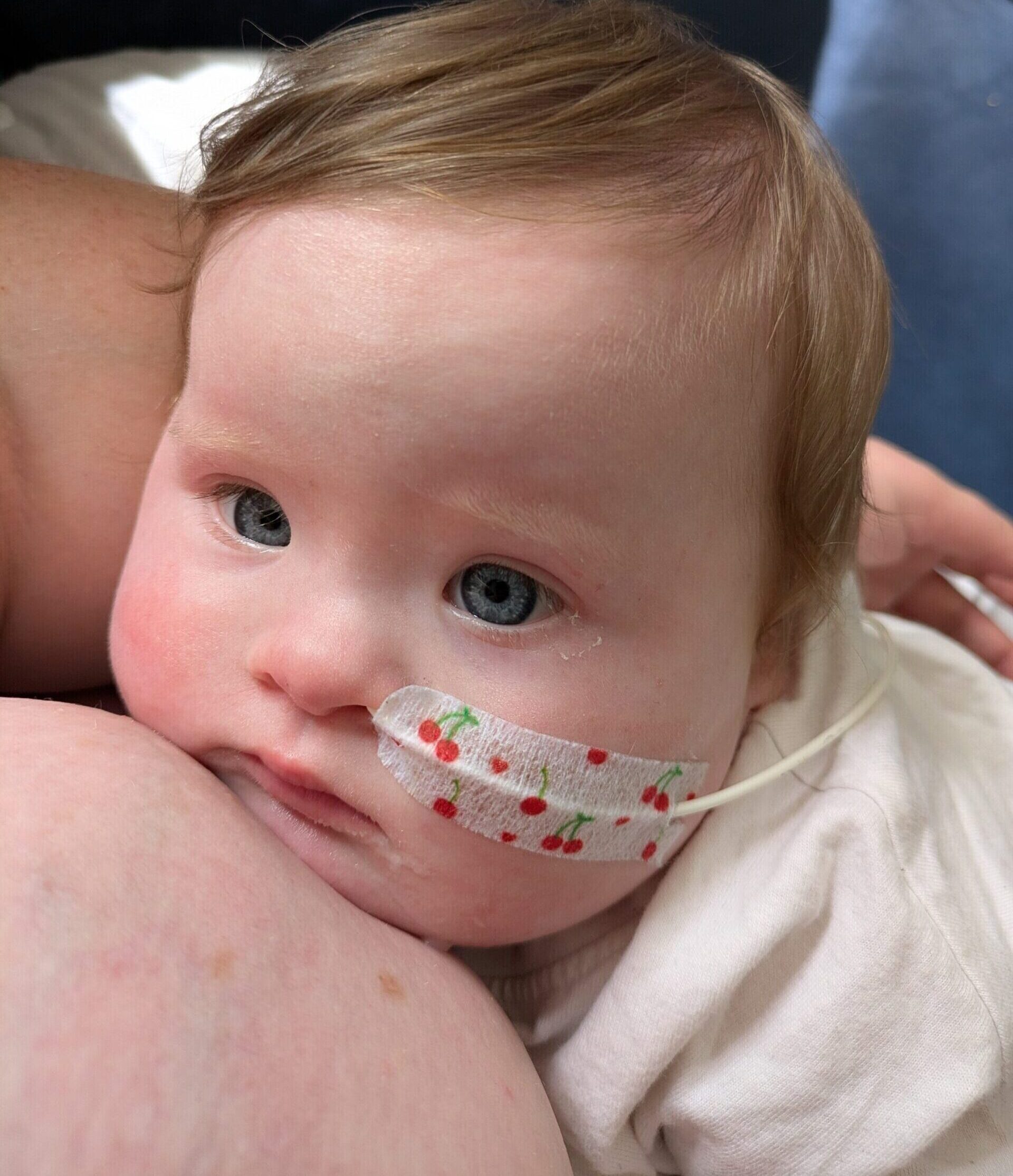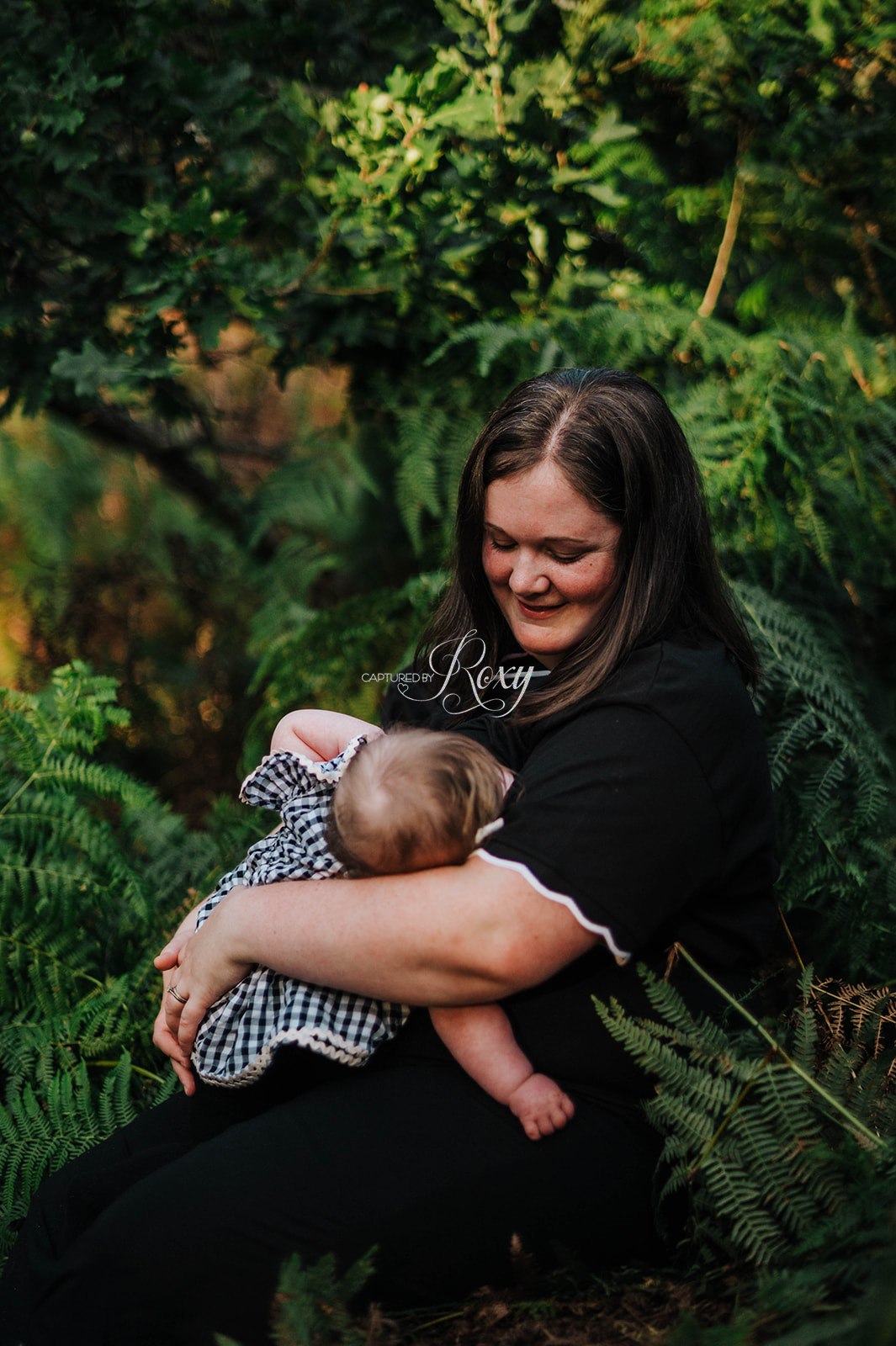Having breastfed my other two babies the intention was to also breastfeed my 3rd. I gained so much confidence, knowledge and experience during my 2nd breastfeeding journey using online resources and community midwives, that breastfeeding was my ultimate choice. I found out during my pregnancy that my little girl had Trisomy 21 but I knew absolutely nothing about the challenges we could face with feeding due to this.
Anna Rose was tiny when she was born
Anna Rose was born at 37 weeks, measuring on the bottom line of the growth charts. She was tiny, I had never held a baby this small so this was new experience. However, as soon as Anna Rose was placed onto me after birth she rooted for food and latched instantly with a wide-open mouth and full checks.
After a fairly difficult pregnancy, it was quite emotional to have this experience. We knew that Anna Rose had Trisomy 21 (T21) from her arrival, but I knew absolutely nothing about any additional challenges we could face with feeding. I was totally unprepared for what came next. It was only about 3 hours later that a midwife explained that babies with Down syndrome can possibly struggle to latch because of low muscle tone including in the tongue and lips.
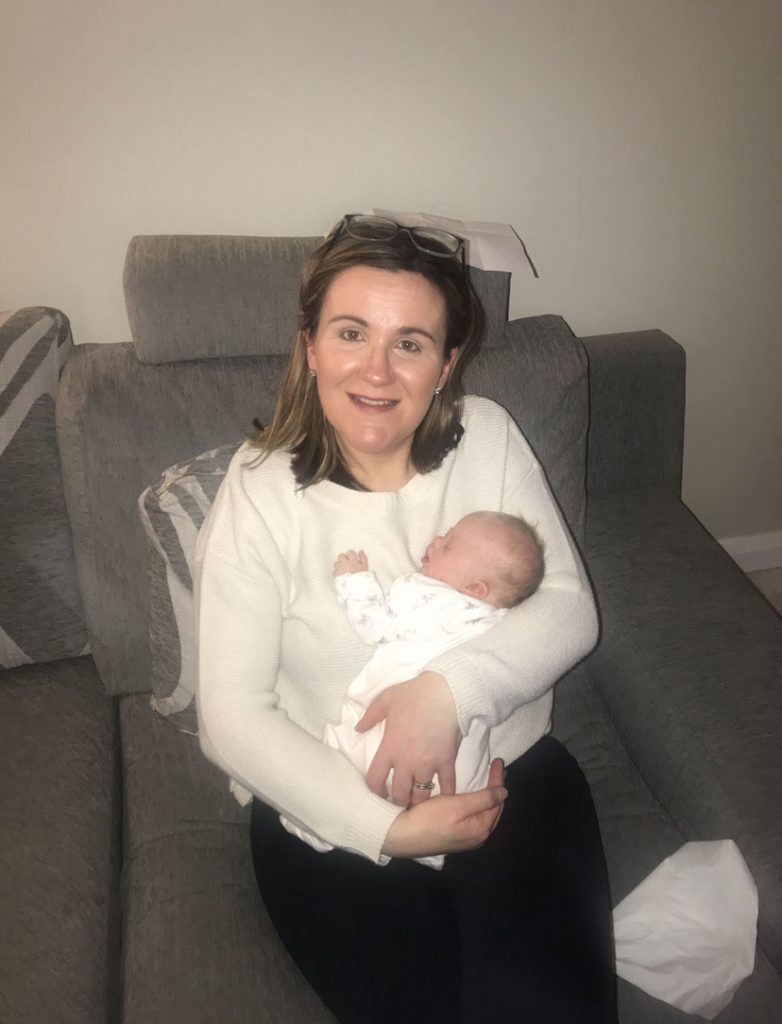
It was only about 3 hours later that a midwife explained that babies with Down syndrome can possibly struggle to latch because of low muscle tone including in the tongue and lips.
She was very ‘floppy’ but her latch was perfect
Anna Rose was extremely ‘floppy’ within her neck, arms and legs requiring as much support as possible but the midwives and her Paediatrician all agreed her latch was perfect. I was able to scoop her up using one hand with her small size helping with feeding positions. I used the rugby and cross-cradle hold feeding positions, these being ones I could never do comfortably with my other babies.
It never occurred to me that Anna Rose would have any difficulty feeding, I had to remind myself that although I had breastfed before this was something new for her to grasp. Due to Anna Rose’s small birth weight and oxygen levels she was transferred to neonatal the next morning. Whilst I found neonatal extremely traumatic I knew that breastmilk was all the more important for her immune system and to reduce the likelihood of infection.
The decision was made to give formula top-ups
The Hospital were beyond amazing and supportive, respecting my feeding choices, setting up and helping me with an Ardo hospital grade double pump (these are STRONG machines !!), syringing and storing that precious ‘liquid gold’. Anna Rose was incredibly sleepy and together with the heat from the incubator we found it difficult to wake her for feeds. I fed her at the breast for the first day, with copious amounts of skin to skin. Her Paediatrician then spoke about an NG tube but I wasn’t in favour of this so we agreed on formula top-ups after feeding at the breast alongside the colostrum/milk I was expressing.
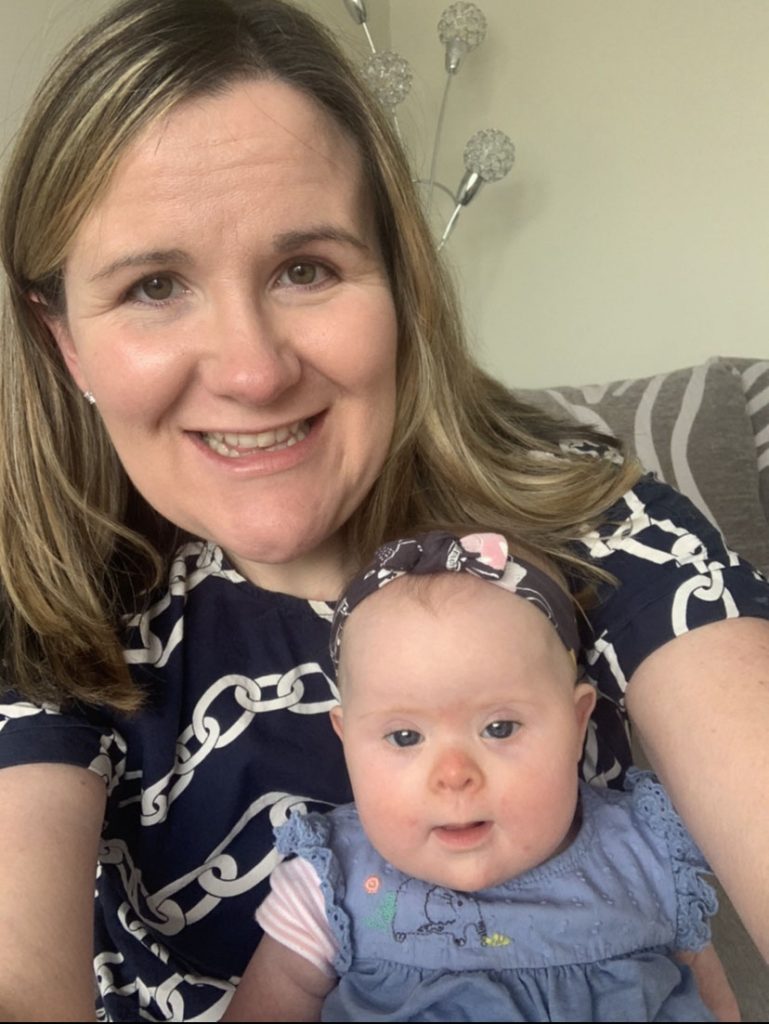
I had looked at donor breastmilk to supplement my own milk and this wasn’t available for Anna Rose. My milk came in by the end of day 3. I had low supply with my 2nd Baby and had to work hard the first few weeks on my supply so I was shocked at how quick it came in this time with a plentiful supply.
Anna Rose’s diagnosis was secondary to ensuring I could feed her. Anna Rose left neonatal and we were discharged home on day 5 with her feeding for each feed at the breast. In those early days she continued to be sleepy so I set an alarm and woke her for feeds during the night.
Anna Rose’s diagnosis was secondary to ensuring I could feed her.
There was pressure from the midwife to continue to give formula for weight gain
Anna Rose’s weight gain was slow so I did feel a degree of pressure from the community midwife to offer formula top up when she hadn’t regained her birth weight by 2 weeks (textbook guidance stated this as the optimum timeframe while babies with DS can take much longer – now at 3 weeks). However, although slow gain, she was gaining!
Her latch remained perfect, I had no pain, I could hear her swallow and by offering both sides I made sure she was emptying the breast at each feed. She was becoming more alert and content between feeds with plenty of wet and dirty nappies. I also expressed for a quick 15 mins for the first couple of weeks after each day time feed (The hospital arranged for a loan of the hospital-grade pump from TinyLife charity to help me at home). I used a warm compress to encourage a faster let down and hand expressed just before a feed so Anna Rose didn’t have to work as hard to get milk. I could never hand express with my other two children.
Anna Rose has never been defined by having T21
I felt confident that my daughter was getting enough of my breastmilk. Despite this the midwife referred us to the hospital Dietician. Thankfully she was also a Lactation Consultant and observed a full feed with Anna Rose.
We left with the advice to continue as we were, checking in via telephone every few days with no need to offer any formula top-ups. Anna Rose regained her birthweight by 4 weeks old and continued to be breastfeed on demand for 13 months.
Anna Rose regained her birthweight by 4 weeks old and continued to be breastfeed on demand for 13 months.

Breastfeeding Anna Rose was not only the most beneficial thing for her but incredibly beneficial for myself. I loved having her so close, feeling that she was being comforted and settled while feeding. Breastfeeding most certainly helped me on my own journey of processing her diagnosis as I had her physically close to me during those moments. I needed her as much as she needed my milk and I’m so pleased that we got to experience this wonderful journey. I have had an entirely positive experience of breastfeeding Anna Rose, made easier by the steep learning curve I had with my other children. She wasn’t defined or limited in any way by having T21.
I believe everyone should have access to breastfeeding support
I want to share my story to not only highlight my journey of breastfeeding a baby with DS but also with the aim of promoting and protecting breastfeeding. The UK continues to be heavily criticised by UNICEF for having the lowest rates of breastfeeding in Europe. It is essential that a mother’s choice for feeding her baby are respected but we must challenge the lack of support, accurate information and outdated views that are sometimes available. I had immediate access to midwives clearly trained in breastfeeding support as well as a Lactation Consultant. Every woman should have access to these or an infant feeding lead.
I have only experienced positivity when breastfeeding

I have fed both my girls anytime, anywhere, both in Ireland and on holidays. I never experienced any negative attitudes but instead positivity and random act of kindness. A few I can recall include a stranger and staff in cafes’ bringing me a glass of water or a top-up of tea when out by myself and feeding.
I have fed both my girls anytime, anywhere, both in Ireland and on holidays. I never experienced any negative attitudes but instead positivity and random act of kindness.
There is nothing I’ve read in any literature or research which states that babies with DS can’t breastfeed just as well as any other baby.
Breastfeeding a baby with DS is just like feeding a baby without DS once I got through a few bumps at the start (based entirely on my own positive experience) but critically every baby, mum, and situation is unique as is my own journey. I was given the right information and support as well as learning from my previous experiences, enabling my journey to be the rewarding one that it was.

